PSRS/PEERS Finds Success in Private Real Estate Investment Program
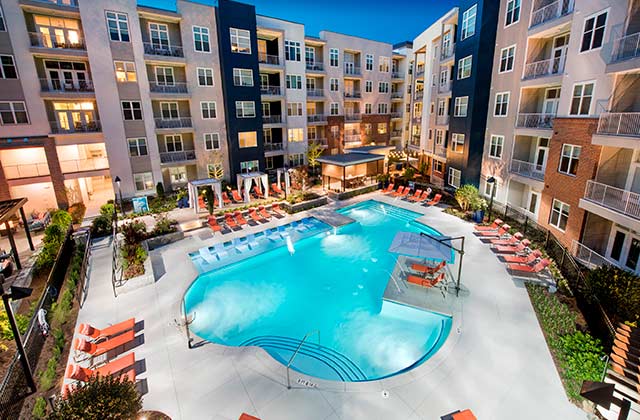
The PSRS/PEERS private real estate program was adopted by the Board of Trustees in January 2004, and the Systems began investing in private real estate in January 2005. The Investment staff works with a real estate consultant to identify best-in-class real estate investment managers who create investment partnerships that the Systems participate in.
The partnerships may invest in different types of U.S. and/or international real estate properties such as office, retail, multi-family, industrial or infrastructure (think toll roads and utilities). The real estate investment manager typically holds these assets in the partnership for up to eight to 10 years.
PSRS/PEERS and other similar investors then invest a certain amount of money in the partnership, and thereby own a pro-rata portion of the properties. For example, if Investor A invests $200 million, Investor B invests $100 million, and PSRS/PEERS invests $100 million in a real estate partnership that is looking for $400 million, then Investor A owns 50%, Investor B owns 25% and PSRS/PEERS owns 25%, respectively, of the properties in that fund.
| Investor | Investment Amount | Ownership Percentage |
|---|---|---|
| Investor A | $200,000,000.00 | 50% |
| Investor B | $100,000,000.00 | 25% |
| PSRS/PEERS | $100,000,000.00 | 25% |
| Total | $400,000,000.00 | 100% |
Private Real Estate Investment Structure
PSRS/PEERS invests in infrastructure and two main categories of private real estate: Core Real Estate and Non-core Real Estate. Descriptions and examples of each are found in the following table.
| Infrastructure | Non-Core Real Estate | Core Real Estate |
|---|---|---|
|
|
|
As outlined in the pie charts below, the target structure is to have 50.0% core real estate, 45.0% non-core real estate, and 5.0% infrastructure. The actual structure as of June 30, 2019 was 64.2% core real estate, 33.3% non-core real estate, and 2.5% infrastructure.
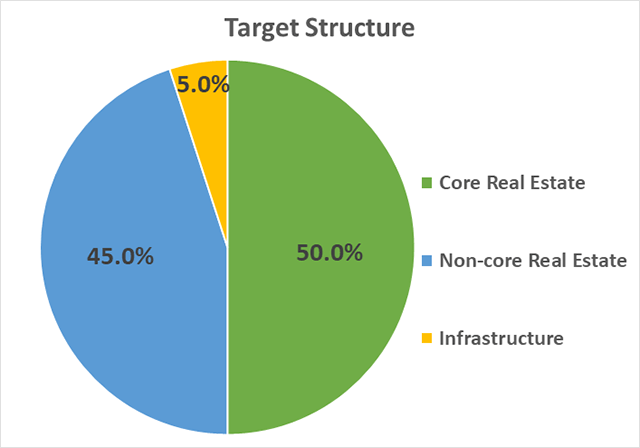
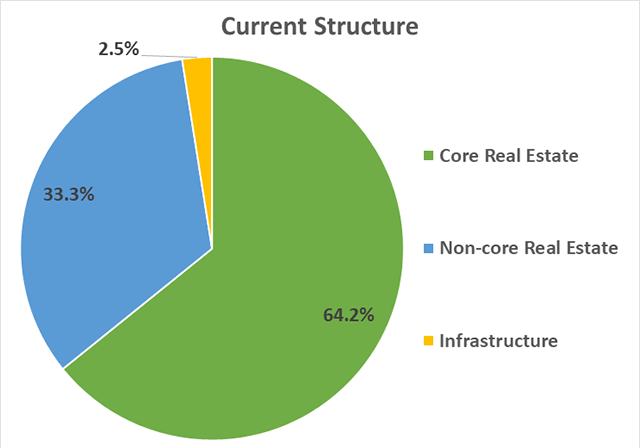
PSRS/PEERS Private Real Estate Portfolio Diversification
As of June 30, 2019, the PSRS/PEERS private real estate portfolio was very well-diversified across property types and geography. Within the real estate portion of the program, the portfolio mainly invests in the four major property types known as office, retail, multi-family and industrial. Additionally, part of the portfolio is invested in non-traditional property types known as “other,” which includes a combination of senior living, student housing, self-storage, medical office and hotels. The charts below highlight the PSRS/PEERS portfolio’s diversification across real estate property types and geography as of June 30, 2019.
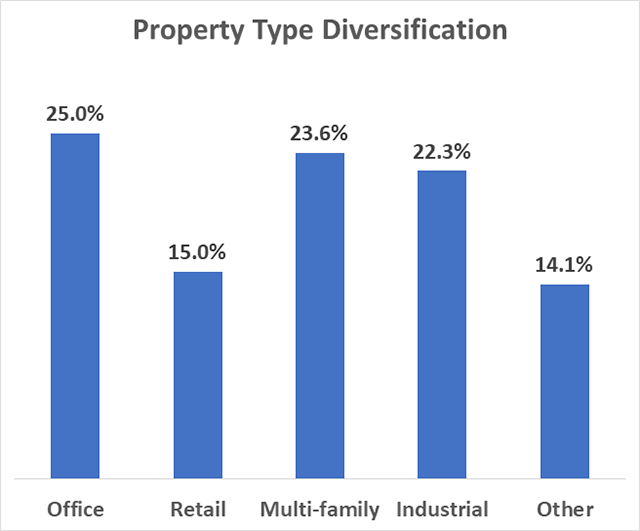
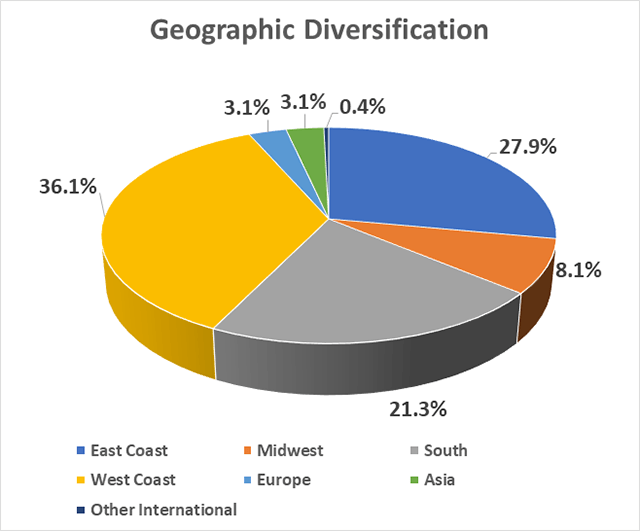
More on Property Types
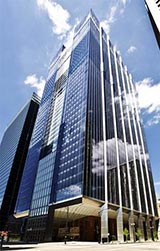
Office
Institutional real estate investments in the office sector typically include multi-level or high-rise buildings. A multi-level office building is generally located in suburban areas or grouped in office parks while high-rise office buildings are usually located in urban, metropolitan areas. The building to the left is a high-rise office building located in the Midwest where PSRS/PEERS holds partial ownership interest.
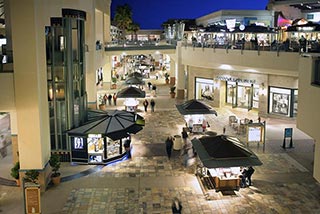
Retail
Real estate investments in the retail sector include small neighborhood shopping centers, grocery-anchored centers, power centers with large anchor stores such as T.J. Maxx or Old Navy, open-air centers such as Branson Landing, and regional malls. To the left is an open-air retail center located in the West Coast where PSRS/PEERS holds partial ownership interest.
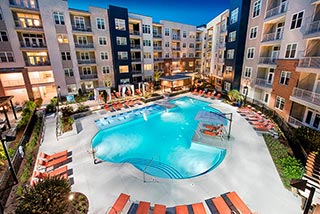
Multi-family
Real estate investments in the multi-family sector include apartments, single family home rentals, high-rise condos and townhomes. Multi-family is generally any type of residential property that is not owned by the tenant and the tenant is paying monthly rent to live there. The multi-family sector can include basic garden-style or mid-rise properties located in suburban areas or luxury apartments located in urban areas. To the left is a luxury apartment located in the Southeast where PSRS/PEERS holds partial ownership interest.
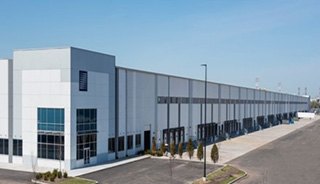
Industrial
Industrial buildings are mostly located outside of urban areas and along major transportation routes. They are mainly used for the transportation of goods from the retailer or supplier to the buyer. For example, Amazon is a large user of industrial buildings to store their inventory and package items for delivery when a customer orders an item off their website. Industrial buildings can include large, big box warehouse buildings, light industrial buildings used to assemble products, last mile delivery buildings that are used to ship directly to customers within one to two days, and flex industrial buildings that combine industrial and office space. The photo to the left is an industrial property located in the East Coast where PSRS/PEERS holds partial ownership interest.
Real Estate is a Successful Part of the Larger PSRS/PEERS Asset Allocation
The private real estate program currently has a long-term target allocation of 9.0% of the Systems’ total assets and the investment policy allows for the allocation to range from 4% to 12%. As of June 30, 2019, the program was 7.9% of the Systems’ total assets, or $3.6 billion in market value.
The portfolio was invested in 2,719 properties through 73 unique partnerships across 34 real estate investment managers. The portfolio generated a five-year return (net of fees) of 9.8% and a 10-year return (net of fees) of 10.0% through June 30, 2019.